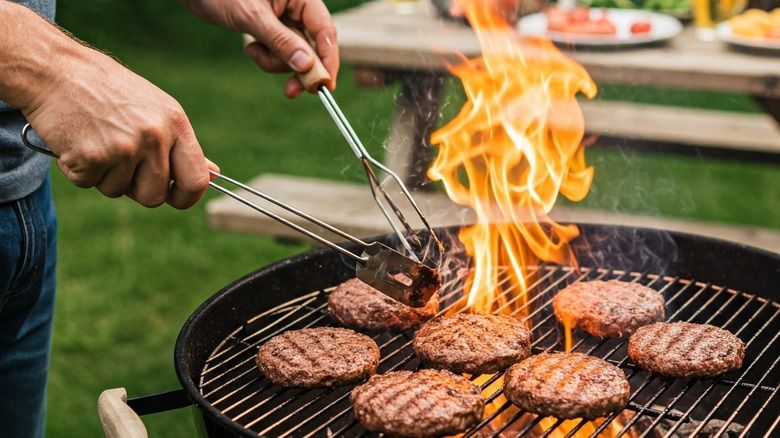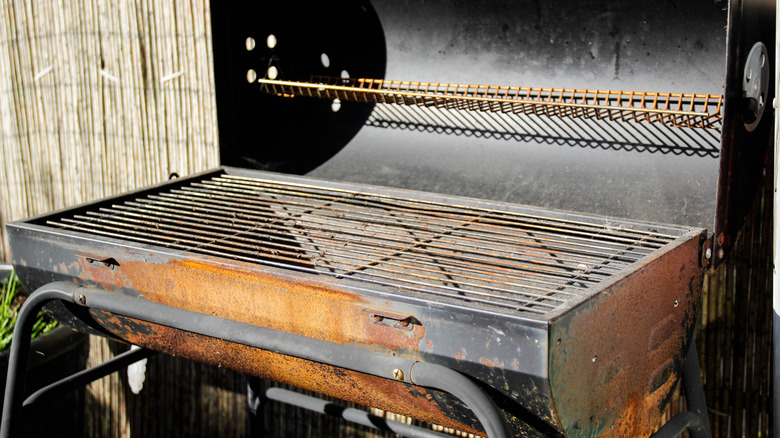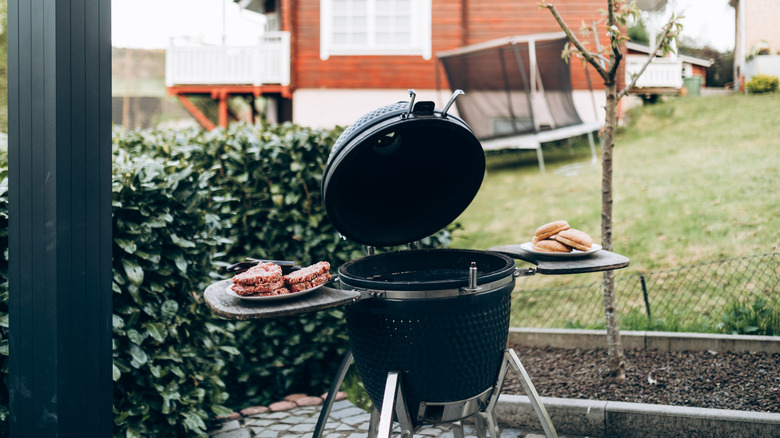Is A Thrifted Vintage Grill Safe To Use?
There's no better feeling than finding a good deal on exactly the secondhand item you've been looking for. However, there are some items you should think twice before thrifting. But when you find something as pricey and functional as a grill for sale, a lower price for a used one is extra tempting. If you love retro appliances and find a vintage grill, that's even better. But is that thrifted vintage grill safe to use?
Like any secondhand grill, the condition of the grill is a key factor, but the additional vintage factor can make repairs more complicated. Resellers are often loose with the definition of vintage, but if they're using it correctly, the grill would be somewhere between 20 and 50 years old — so you may not be able to find replacement parts in stores, and don't count on having a warranty. While the age doesn't necessarily mean you shouldn't buy or use it, you will need to pay extra attention to how damaged it is, what parts need replacing, and whether those replacement parts are readily available.
Are older grills less safe to use?
Whether it's from 1975 or 2025, a grill's safety depends more on its condition than its age. A properly stored vintage grill could be a cleaner and safer grill than a newer one that's been stored uncovered outdoors and subjected to the elements. The general estimate for the lifespan of a grill is 10 to 15 years, but high-quality materials, infrequent use, and proper maintenance can extend this. For instance, grills made of thick stainless steel with welded joints will probably hold up better long-term than aluminum grills with bolted joints.
Some grill innovations are more modern, so if you want features like improved fuel efficiency, infrared grilling technology, and more precise heat control, vintage may not be the way to go. While some features are a matter of personal preference, others are safety improvements. For example, the Consumer Product Safety Commission introduced a voluntary standard in 1999 to prevent liquid petroleum gas leaks via a feature that shuts itself off in case of a leak; while it's not a mandatory standard, gas grills made around 2000 and beyond are generally more likely to have this feature.
How to tell if a vintage grill is safe to buy and use secondhand
A vintage grill's age doesn't inherently make it unsafe, but buying any used grill still requires discernment. It's best if you can inspect the interior and exterior in person before committing to the purchase, and even better if you can ask the previous owner questions about the grill's age, cost, and functionality.
Keep an eye out for visible damage and rust. Seeing rust isn't necessarily a problem, depending on where you spot it. Rusty grates and burners are relatively easy to replace, but rusty external elements, like frames, are more expensive and difficult to find. This is especially true for vintage grills whose parts are no longer in production. Make sure you know the make and model of the grill in order to look up the cost and availability of replacement parts.
Buying rare replacement parts could hurt your finances, but a gas grill with a leak could start a fire and hurt you. And, luckily, it's easy to check for propane leaks. First, ensure all connection points are tight and that the hose doesn't have visible damage. Then, create a mixture of water and dish soap and dab it onto the connections and hose. Once you turn the cylinder on and get gas flowing, the mixture will bubble in any areas with leaks. Leak issues may be fixable, but never ignite the grill until they're resolved.


